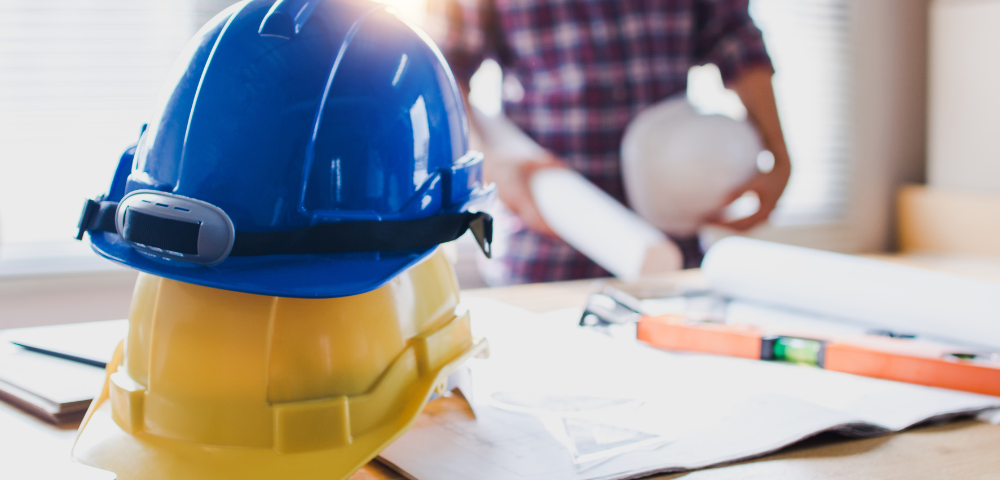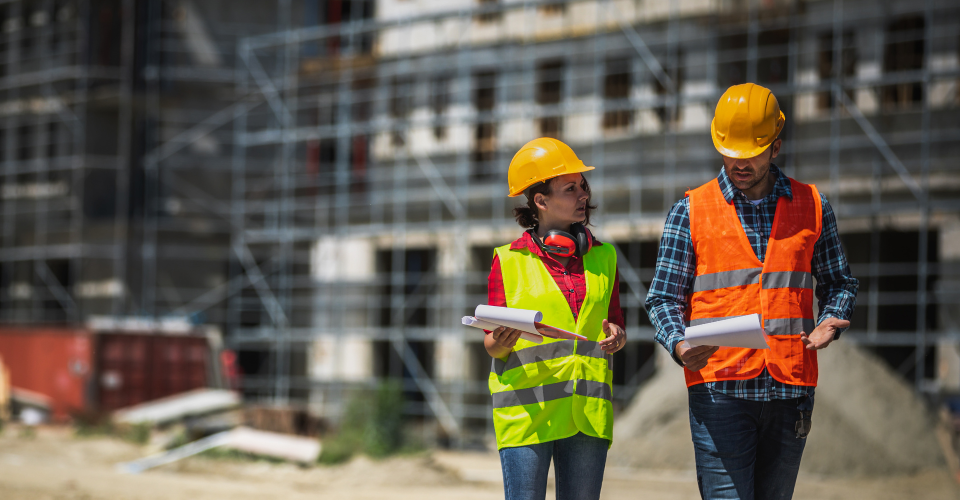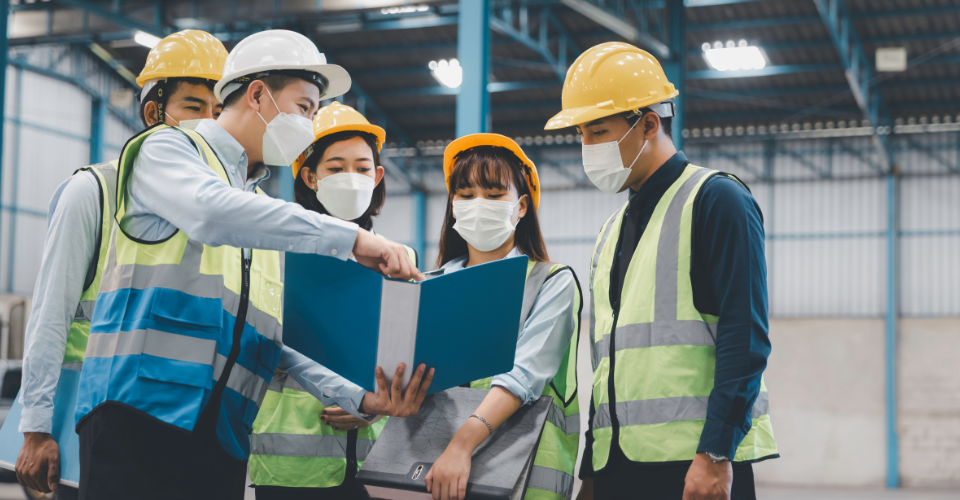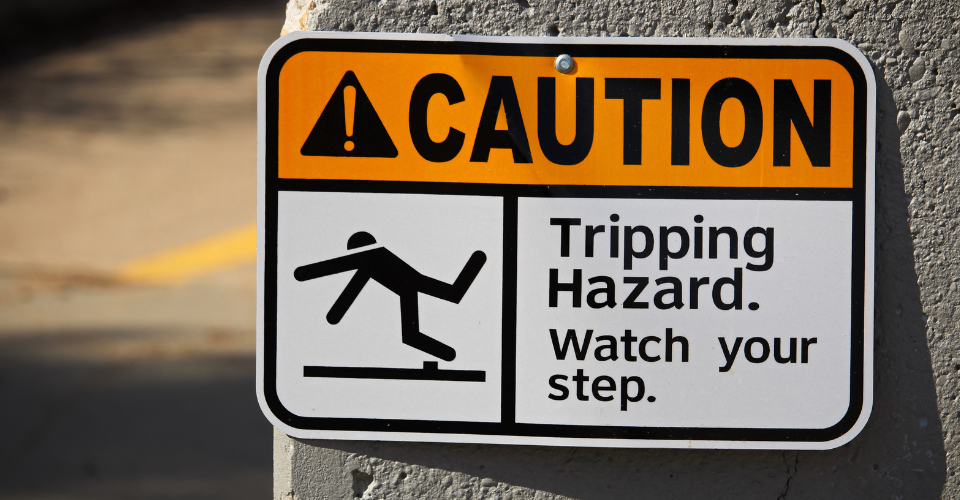A Guide to Health and Safety in the Construction Industry

Top Strategies for the Health and Safety Construction Industry
How can the construction industry ensure worker safety? In this article, we cover essential regulations, common hazards, and practical strategies to improve health and safety in the construction industry.
Key Takeaways
- Health and safety is key to protecting construction workers and improving productivity so you need a robust safety system and training.
- Having a risk management system in place with regular safety audits, risk assessments and hazard reporting is key to a safer construction site.
- Understanding and adhering to regulations, such as the Health and Safety at Work Act 1974 and CDM Regulations 2015, is essential for minimising safety risks and ensuring legal compliance.
Importance of Health and Safety in Construction
Health and safety in construction is important for the health and for the well-being of workers, so everyone can go home unharmed. The construction industry is full of safety risks and a health and safety compliance system can reduce those risks, save lives and improve productivity.
Not following health and safety regulations can result in productivity losses and financial penalties. Managers must comply with these regulations to avoid this. Implementing these from the start of construction projects not only protects workers but also improves overall efficiency by minimising downtime caused by accidents.
Following health and safety on site means processes, training and continuous improvement. These are crucial to spotting and fixing safety risks.
Health and Safety Regulations
Everyone in the construction industry needs to know health and safety law. Primary regulation in the UK is the Health and Safety at Work Act 1974 which requires employers to ensure the health, safety and welfare of their employees as far as is practicable. This is the foundation on which all other regulations are built.
The Construction (Design and Management) Regulations 2015 (CDM 2015) places explicit duties on contractors, principal contractors, designers, principal designers and the client to put health and safety first throughout all project stages. CDM 2015 requires clients to ensure all appropriate duty holders are appointed; this includes appointment of a Principal Contractor to Plan, manage, monitor and coordinate health and safety in the construction phase of a project.
The Management of Health and Safety at Work Regulations 1999 requires employers to identify the risks to all persons affected and take steps to control and reduce the risk through preparation of suitable and sufficient risk assessments. Non-compliance can result in serious injuries to workers and subsequent prosecutions including fines.
Following health and safety legislation means ensuring the safety and well-being of all works on construction projects in addition to legal compliance.
Common Hazards in Construction
Construction sites are full of hazards, hazards are around every corner. From working at height to operating heavy machinery the hazards are many and varied.
This section looks at the most common hazards, falls from height, hazardous substances and equipment accidents, each of which can be deadly to construction workers.
- Falls from Height
One of the biggest hazards in construction is falls from height, which is the leading cause of fatal accidents. Falls from height are commonly caused by faulty or damaged equipment, insufficient safety measures, misuse of equipment and lack of suitable training which can result in serious injury or death.
To prevent these accidents, you need safety training on the correct use of ladders, proper setup and regular inspection of scaffolding and other work-at-height equipment. Proactive management and implementation of health and safety procedures can reduce falls from height and save lives.
- Hazardous Substances
Handling hazardous substances is another big hazard. The Control of Substances Hazardous to Health Regulations 2002 (COSHH) requires employers to identify all hazardous substances in use and assess the health and safety risk to ensure appropriate control measures are in place to protect workers.
Compliance with these regulations is key to worker’s health and safety. Employers must have safety procedures in place and workers trained to handle and use hazardous substances.
- Equipment
Equipment accidents are a big problem in construction. Accidents involving work equipment account for 32% of fatal injuries in construction. These fatal injuries include being trapped by something collapsing or overturning, being struck by moving (including flying/falling) objects and being struck by moving vehicles.
Regular training on equipment operation and strict adherence to safety procedures can reduce equipment accidents. A regular maintenance schedule will ensure machinery is in proper working order can further reduce the risk.
Long Term Health Risks for Construction Workers
Beyond the immediate hazards construction workers face many long-term health issues. Manual handling tasks can lead to musculoskeletal disorders resulting in chronic pain and permanent disability. Between 2021/22 – 2023/24 there were ~40,000 workers suffering from work-related musculoskeletal disorders which accounts for 52% of ill health in the construction sector. Repetitive tasks performed in awkward positions can result in upper limb disorders commonly known as repetitive strain injuries. Ongoing pressures and stresses within the industry from rising costs, to managing tight budgets and long hours can lead to work-related stress, depression and/or anxiety, with construction workers being at the highest risk of suicide of in the UK. Recognising the wide range of support available in the construction sector and understanding how to identify signs of stress will help to prevent stress in your workplace.
To manage these health risks, you need to commit to ongoing health and safety compliance and have a comprehensive workplace safety program. This program should include assessing the risks of work-related stress and recognising both the causes and signs of stress through a suitable training programme for all levels of workers.
See an example of work-related stress risk assessment: https://www.hse.gov.uk/stress/risk-assessment.htm
Health and Safety Roles and Responsibilities
Health and safety on construction sites is everyone’s responsibility. Clients provide pre-construction information and ensure the project team is competent, employers provide a safe working environment, training, and PPE. The Health and Safety Executive (HSE) is the overall Building Safety Regulator (BSR) And as regulator the HSE raise awareness, carry out targeted inspections and take enforcement action to prevent harm.
Workers also have a role to play in health and safety. They must follow site rules, report hazards, and co-operate with their employer.
All CDM duty holders have responsibilities for construction works as part of the overall safety management of a project. It is essential to ensure that the right project team is in place with the appropriate skills, knowledge, training and experience to carry out construction works.
Risk Management Strategies
Effective risk management is key to health and safety on construction sites. This includes risk assessments, regular safety audits and clear hazard reporting procedures. Identifying and addressing risks proactively will create a safer working environment and increase compliance.
- Risk Assessments
A full risk assessment is required to identify safety risks and controls. This involves identifying hazards, assessing risk, and implementing controls as required by regulation.
It’s very important to record each risk assessment so they can be shared with all parties involved to keep everyone informed of the hazards. Regular reviews will keep safety controls up to date and adapt to new conditions.
- Regular Safety Audits
Regular safety audits ensure compliance with health and safety standards. These audits will identify areas for improvement and enhance safety procedures. Third-party health and safety consultants can provide an objective view and provide support and guidance to ensure compliance.
Safety audits identify construction site risks and support reduction of accidents. Audits also and check that the measures in place are being followed by all workers and demonstrate your ongoing commitment to site safety.
“The biggest challenges in implementing risk controls often stem from inadequate competent supervision during tasks and over-reliance on workers being ‘competent’ simply because they’ve performed similar tasks before. Common issues also include time pressures, tight build schedules, and a ‘let’s do it now’ mindset, which often bypasses proper planning and task assessment.”
– Eleanor Eaton, Managing Director at CQMS
Training and Development for Compliance
Continuous training is key to health and safety compliance in construction. Ongoing learning will equip workers to identify hazards and follow the safety procedures. eLearning and custom courses will make training more engaging and effective.
It is important to also train workers in the correct use and maintenance of PPE. PPE is often the last, but essential, control measure in place to support a workers health and safety.
Look at a list of some of the training courses offered by CQMS:
Using Technology to Improve Safety
Technology can improve safety on construction sites. Safety management software and wearable devices will track worker movements and alert them to hazards. Electronic near-miss and hazard reporting will simplify the process and increase reporting.
Advanced technologies like video analytics and artificial intelligence can identify unsafe behaviour and predict safety incidents so you can intervene and prevent. Using these will increase compliance and create a safer working environment.
Building a Safety Culture
Building a safety culture will get long term health and safety compliance. A safety-first culture will create respect among workers and improve safety practices. Engaged workers will participate in discussions, hazard reporting and recognition of good safety. Regular near-miss reporting by workers will help to prevent accidents and raise awareness about construction site risks.
Transparent communication across all parties is key to building a safety culture. Clear and open communication will get everyone committed to high safety standards and build better compliance and improve quality.
Personal Protective Equipment (PPE) in Construction
Personal protective equipment (PPE) is crucial to construction site safety. Common PPE items include hard hats, hearing protection, safety glasses, gloves, fall protection gear and respiratory masks. Employers must ensure PPE fits and is inspected regularly for damage.
Some tasks may require specific PPE, such as fall protection equipment i.e. safety harnesses where exposure to the risk of falls cannot be eliminated by the risk assessment. Training on the correct use, and maintenance, of PPE is required to ensure the worker is protected. Training on using PPE correctly will get the most out of it and keep workers safe.
Emergency Procedures and Preparedness
Emergency preparedness is a key part of construction site safety. Make sure emergency procedures are in place and communicated to all workers. This should include evacuation plans, responsibilities for key workers and ongoing review. All workers should know what to do in the event of an emergency and how to get medical help should an accident occur.
Don’t Leave Safety to Chance
Maintaining health and safety on construction sites is a multifaceted endeavour that requires a commitment to robust regulations, continuous training, and effective risk management strategies. From understanding key safety risks to leveraging technology for safety improvements, every aspect contributes to creating a safer working environment.
Remember, a strong safety culture not only protects workers but also enhances productivity and project success. By prioritising health and safety, you can ensure the well-being of all construction workers and the overall success of your projects.
Frequently Asked Questions
- What are the most common causes of injuries on construction sites?
The most common causes of injuries on construction sites are falls from heights, slips, trips and falls on the same level and being struck by moving objects. Prioritising safety measures and implementing correct training can significantly reduce these risks.
- What are the key regulations governing health and safety in the construction industry?
The regulations governing health and safety in the construction industry are the Health and Safety at Work Act 1974, the Construction (Design and Management) Regulations 2015, and the Management of Health and Safety at Work Regulations 1999. These laws emphasise the necessity of risk assessments and adherence to safety protocols to ensure worker protection.
- How can technology improve safety on construction sites?
Technology significantly improves safety on construction sites by utilising safety management software, wearable devices, and AI-driven analytics to monitor worker movements and predict incidents. This proactive approach streamlines hazard reporting and enhances overall safety compliance.
- Why is continuous training important for construction workers?
Continuous, and regular, training is crucial for construction workers as it keeps them informed about new regulations and safety protocols. Ongoing refresher training equips workers with the skills needed to strengthen their skills and identify hazards in the workplace, ultimately reducing the risk of accidents and injuries on the job.
- What roles and responsibilities do employers have in ensuring construction site safety?
Employers must ensure a safe working environment by providing proper training, appropriate PPE, and consulting workers on safety. Additionally, they are responsible for conducting risk assessments and managing health and safety throughout the project.
CDM duty-holders have additional requirements for compliance with construction legislation to support the overall project and all other duty-holders involved.
CQMS is Here to Help
If you’re looking for a reliable partner to help navigate these complexities, CQMS is here to support you every step of the way. With our expertise, you can ensure your construction projects meet the highest safety standards. Contact our health and safety consultants for more information.






